Work in Progress – Some of the content is in development, and may be subject to change
Information: massimiliano.pirani@ieee.org
Bilal Ahmad

Industrial agents, hands on, code generation (low code, no code)
t.b.d.
BIO
t.b.d.
Google Scholar: https://scholar.google.com/citations?hl=en&user=Xb6hwiwAAAAJ
José Barbosa

Industrial agents, hands on
t.b.d.
BIO
t.b.d.
Google Scholar: https://scholar.google.com/citations?hl=en&user=wJH_aGwAAAAJ
Nicola Bergantino

Industrial agents, hands on
Launched in 2004, the Intelligent Agents Framework (IAF) has deployed hundreds of thousands of agents distributed across various international companies, aiming to monitor and improve the performance of production processes while reducing waste. The agent ecosystem interacts with the process, from the machine PLC to human operators, processing data.
From industrial processes to overhead power line design and calculation, the agent-based paradigm demonstrates its general problem-solving ability and versatility.
In terms of AI, the agent incorporates AI algorithms, enabling the machine to reason. Using the IAF, we encapsulate the ability to reason and interact in natural language within the agent, also enabling the agents to communicate with each other in new ways, ultimately leading to the creation of the MyHydra framework.
In this lecture, we will provide a hands-on guide on how to build a reactive agent from scratch using the IAF, covering the key steps involved in its development. We will explore how this reactive agent can communicate and collaborate with other agents within the system. Additionally, we will demonstrate how to create an intelligent agent ecosystem based on Large Language Models using MyHydra, showing how these agents can be used as powerful tools that acquire the ability to interact with the external world. Finally, we will discuss the significant advantages that industries can gain by integrating these intelligent agents into their processes, enhancing efficiency, decision-making, and innovation.
BIO
Nicola Bergantino is the founder of Next S.r.l., a software house based in Jesi (AN), Italy.
The passion for the world of computing flamed at the age of 8 when he wrote his first computer program, marking the start of a lifelong journey in software engineering.
His professional career in the IT sector began in the mid-1990s, during which he designed and developed numerous projects. In 1999, he began his studies in Artificial Intelligence (AI). The most notable application of AI is in the transportation sector, in which he designed and developed the “Intelligent Agents Framework” (IAF), an agent platform based on AI paradigms.
In collaboration with a research team from Università Politecnica delle Marche (UNIVPM), Nicola has contributed to scientific publications focused on this platform and the use of AI in fault detection and diagnosis for automated processes.
In 2018, he received an award for a scientific publication on the functionality of a reinforcement learning-based AI agent system, designed to support decision-making in the industrial production of kitchen hoods.
Currently, his primary objective is to integrate AI agents into the industrial processes of international companies through projects developed at Next S.r.l. These include IMPROVE, focused on industrial applications, and ProLED, dedicated to the mechanical design of overhead power lines.
As the leader of the ProLED initiative, Nicola is an Adjunct Professor at ELIS, a non-profit organization focused on innovation and training. He teaches “Electric Distribution Network Design” course, with a focus on the “Theory and practice of mechanical design for overhead power lines”.
Furthermore, he designed MyHydra, a next-generation AI framework that extends the IAF by integrating Large Language Models architectures. This innovation enables AI agents to engage in natural language reasoning and interaction, significantly enhancing their decision-making and problem-solving capabilities.
Aldo Franco Dragoni

Industrial agents – t.b.d.
t.b.d.
BIO
t.b.d.
Google Scholar: https://scholar.google.com/citations?hl=en&user=yi2LYYMAAAAJ
Felix Gehlhoff

Comparison of Digital Twins and Software Agents in Industrial Applications
To achieve a highly agile and flexible production, it is envisioned that industrial production systems gradually become more decentralized, interconnected, and intelligent. Within this vision, production assets collaborate with each other, exhibiting a high degree of autonomy. Furthermore, knowledge about individual production assets is readily available throughout their entire life cycles. To realize this vision, adequate use of information technology is required. Two commonly applied software paradigms in this context are Software Agents and Digital Twins (DTs). This lecture will compare Agents and DTs in industrial applications, comprising differences, similarities, and potential synergies between the two paradigms. The comparison is based on the purposes for which Agents and DTs are applied, the properties and capabilities exhibited by these software paradigms, and how they can be allocated within the Reference Architecture Model Industry 4.0.
BIO
Felix Gehlhoff received his PhD from the Helmut Schmidt University / University of the Federal Armed Forces Hamburg in 2023 on agent-based control methods for optimizing production and logistics scheduling. He was research group leader for agent-based systems and subsequently post-doc for autonomous systems and AI. As head of the Department of Automation Technology, his current research interests include software agents, engineering methods for complex automation systems, the application of autonomous systems in production, energy and intralogistics, and the model-based representation, control and validation of automated processes.
Eui-Nam Huh
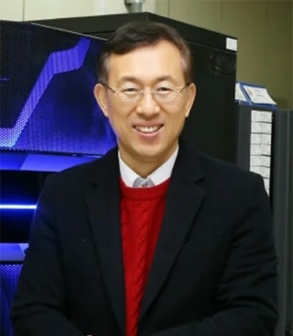
AI Industry agent with AI: Agent as a Service
AI is now on users and not in data centers for training. It becomes a personal & smart & extra brain rather than the well-defined automated function in machine. To deliver AI technology to industry using SW embedded agents, this talk covers from fundamental overview, key characteristics, PEAS concept, types, structures of AI agents to modern AI agents in real-world applications delivered as a service. Finally technical challenges using AI is introduced.
BIO
Eui-Nam Huh received his PhD from the Ohio University in March, 2002 on the agent-based control system to interact with dynamic environments in real-time, especially for the defense system. He is now working on the development of AI agent on cloud continuum environments including IoT and Industry systems. He is a director of ICT Cloud Continuum Research Center supported by MSIT(Ministry of Science and ICT), Korea, under the ITRC(Information Technology Research Center) support program supervised by the IITP(Institute for Information & Communications Technology Planning & Evaluation). This center focuses on AI related technology to support large scale AI services including Edge AI. His current research interests include AI agents, AI for Cloud, Cloud for AI and AI for Network.
Stamatis Karnouskos

Agents in the Era of AI: Technology and Ethics
Software agents have long been used to perceive their environments and make autonomous decisions, providing tangible benefits across various domains. However, with the latest practical advances in AI, such as the large language models and multi-modal systems, agents can now handle increasingly complex tasks and operate in real-world environments at unparalleled scale. This is done while the entry barrier towards interacting with humans (as users and programmers) is significantly lowered. Such developments will further democratize the use of AI-driven agents and are expected to impact industrial ecosystems significantly. A critical component, however, remains the ethical implications of developing, deploying, and using such agent systems as concerns for bias, privacy, accountability, and workforce displacement are raised. The talk will touch upon several aspects of technology and ethics that pertain to the agents and AI overall.
BIO
Stamatis Karnouskos (IEEE Fellow) is with SAP in Germany, dealing with emerging technologies and enterprise systems, industry standards, and open source. He has over 25 years of extensive experience in research and technology management and has led efforts in several European Commission and industry-funded projects. He has served on the technical advisory board of organizations such as the Internet Protocol for Smart Objects Alliance (IPSO), the Permanent Stakeholder Group of the European Network and Information Security Agency (ENISA), the Research Centre in Digitalization and Intelligent Robotics (CeDRI), etc. In IEEE, Stamatis serves as Associate Editor in several IEEE journals, is IEEE IES VP on Industrial Activities, and a member of the IEEE Industry Engagement Committee (IEC), the IEEE Global Policy Caucus (GPC), and the IEEE European Public Policy Committee (EPPC).
LinkedIn: https://www.linkedin.com/in/karnouskos/
Google Scholar: https://scholar.google.com/citations?user=WkLswkoAAAAJh
Paulo Leitão
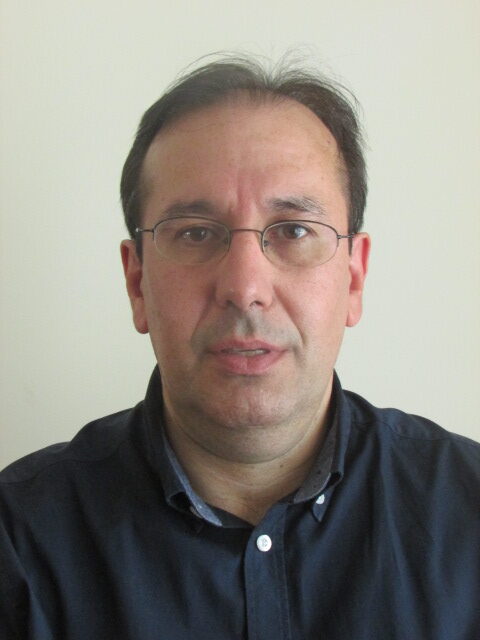
Introduction to industrial agents Part I and Part II
The objective of this module is to provide an introduction to the main concepts of agent-based systems, as well as the available technologies and frameworks to develop such systems, in the cyber-physical systems (CPS) context. In detail, topics of this course comprise:
- Fundamentals of MAS: definition of agent and MAS, agent architectures, holonic principles, modelling individual behaviors, interaction protocols and ontologies.
- MAS to develop Cyber-Physical Systems: industrial agents concept, agents to implement cyber parts, distribution of intelligence among edge, fog and cloud computing layers.
- Standards, tools and frameworks to develop agent-based solutions.
- Examples of industrial applications.
- Research challenges and alignment with Industry 4.0.
BIO
Paulo Leitão is Full Professor at Instituto Politécnico de Bragança, Department of Electrical Engineering, and coordinator of CeDRI – Research Centre in Digitalization and Intelligent Robotics. His research interests are in the field of intelligent and reconfigurable systems, cyber-physical systems, multi-agent systems, digital twins, Internet of Things, factory automation and holonic systems. He participate / has participated in several national and international research projects, supervised 8 PhD thesis and is currently supervising 9 PhD thesis. He published 10 books and more than 350 papers in high-ranked international scientific journals and conference proceedings (per-review). He is co-author of three patents and received ten paper awards at international conferences. He served as general co-chair in 4 international conferences, and Chair of the IEEE IES Technical Committee on Industrial Agents, and member of the IEEE IES Administrative Committee (AdCom). He was also chair of the established IEEE 2660.1-2020 standard.
Google Scholar: https://scholar.google.com/citations?hl=en&user=GVpLnTIAAAAJ
Massimiliano Pirani

RMAS, Blockchain and the ENOUGH project developments
The Relational-model Multi Agent System was developed to address the challenges created by
new demands for intelligent, scalable, distributed, and interoperable industrial agent solutions that can be implemented with existing common technologies. RMAS is considered promising in the context of IEC 61499, as a means to break the barriers between high and low control levels. Recently, this technology has been the core of the infrastructure of a platform in the H2020 ENOUGH project (ID: 101036588), concerning holistic management control of food supply chains. Last developments, consider also the fundamental role of the Blockchain framework in industrial processes, which RMAS can integrate, enable, and reinforce as a key for the sustainability of the symbiosis between humans and machines.
BIO
Massimiliano Pirani is a Tenure-Track Assistant Professor (RTT) at Pegaso University. Formerly he served as Fixed-time Assistant Professor, Senior researcher, Research Fellow, at Marche Polytechnic University, from 2015 to 2024. Adjunct lecturer for Marche Polytechnic University since 2005, then Assistant Professor in 2020-2023, in several courses in computer science, computer networks, and mathematics. He has been also a Faculty Board Member of PhD courses at Marche Polytechnic University, and teacher in PhD courses on complexity and cyber-physical systems at the same university. Employee at hardware and software design company SPES S.c.p.a. from 2004 to 2014, and freelance research and software manager and developer in 2014-2015. He holds Master’s degree in Electronics Engineering, and Ph.D. in Electronics and Telecommunications Engineering. He has taken role of management and scientific research leader, particularly on European Commission programs (two FP5, two FP7, and two Horizon 2020). Senior Member IEEE. Author in the standard P2660.1 for IEEE STANDARDS ASSOCIATION entitled “Recommendation Practices on Industrial Agents: Integration of Software Agents and Low Level Automation Functions.” Secretary of the IEEE-IES Technical Committee on Industrial Agents (TC-IA). Member of the IEEE IES Technical Committee on Responsible Artificial Intelligence. Research topics and professional areas: Cyber-Physical Systems of Systems, Cybernetics and Systems Thinking, multi-agent systems, embedded electronics, causal and generative AI, embodied intelligence, Artificial General Intelligence, distributed database systems, Distributed Ledger Technology and Blockchain, IoT, IoE, smart industrial automation, Industry 4.0/5.0, Systems Engineering, general systems and automata theory.
Google Scholar: https://scholar.google.com/citations?hl=en&user=rD4f9igAAAAJ
Luca Spalazzi

Blockchain & Runtime Enforcement for BPMN Choreographies
This lecture investigates the challenges of enforcing compliance with Business Process
Model and Notation (BPMN) choreographies in distributed environments where trust among participants is crucial. Traditional approaches to choreography enforcement often rely on centralized monitors, raising concerns about how much they can be trusted, namely about being single points of failure and potential manipulation. Therefore, this lecture addresses two key trust issues: (i) ensuring monitors are error-free and (ii) ensuring monitors act honestly. The lecture will present how synthesizing decentralized enforcement monitors using formal methods and distributed ledger technologies (DLTs). The presented methodology leverages regular expressions with interleaving (REI) to generate non-deterministic finite automata, which, in turn, produce enforcement monitors capable of regulating message exchanges according to BPMN choreographies. Furthermore, the trustworthiness of decentralized monitors will be assessed by analyzing their soundness and transparency under different DLT configurations.
BIO
Luca Spalazzi received the MEng in Electronic Engineering in 1989 and PhD degree in Artificial Intelligent Systems in 1994. He is currently an associate professor at the Università Politecnica delle Marche, Italy. He was a consultant with IRST-FBK, Trento, Italy from 1991 to 1993 and in 1997. He was the recipient of Scientific National Italian Habilitation as full professor (2020).
His research has been supported by the European Union, the Italian Minister of University and Scientific Research, the Austrian Research Promotion Agency (FFG), the Italian ISP for research and education institutions (GARR), Regione Marche, and Provincia di Ancona. His present research areas include both Formal Methods and Machine Learning applied to Cyberecurity and Distributed Ledger Technologies. He is the author of more than 120 research articles published in refereed international journals and conferences.
Google Scholar: https://scholar.google.com/citations?hl=en&user=fEZU6NwAAAAJ
Gwen Salaün
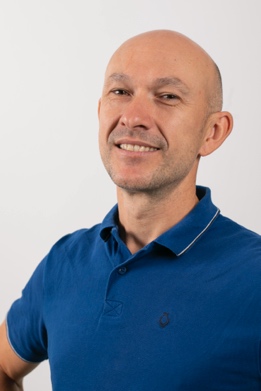
Quantitative analysis and runtime enforcement for IEC 61499
IEC 61499 applications consist of many FBs distributed onto multiple control devices associated with many sensors and actuators. Such industrial applications exhibit unpredictable behaviours due to their interactions with the environment, which involves various external elements that may impact the system’s behaviour. Moreover, an IEC 61499 application can be reconfigured in many different ways, such as inserting or deleting FBs, creating new FBs with their respective internal behaviours, and adjusting the connections between FBs. These require considerable effort and cost, and there is no guarantee to satisfy the requirements. In this lecture, a method is first introduced to verify and analyse the quantitative aspects of industrial systems using probabilistic model checking. Second, an approach based on enforcement techniques is presented to support adaptive IEC 61499 applications. It works by adjusting the application to specific requirements by modifying its runtime execution.
BIO
Gwen Salaün received a PhD degree in Computer Science from the University of Nantes (France) in 2003. He was associate professor at Grenoble INP (France) from 2009 to 2016. He is currently full professor at University Grenoble Alpes. His research interests include formal methods, modelling languages, automated verification, distributed systems, software engineering, industrial applications.
Google Scholar: https://scholar.google.com/citations?hl=en&user=UOOb-UkAAAAJ
Thomas Strasser
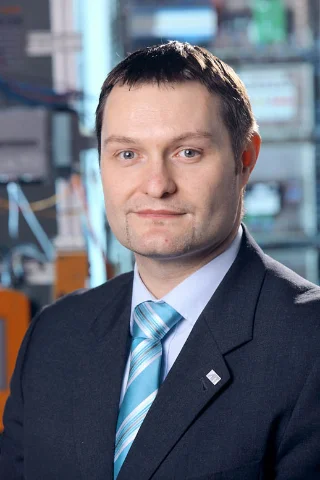
Designing and implementing field agents with IEC 61499 and 4diac – Part I
The automation level in industrial applications is steadily increasing, resulting in higher system complexity. Actuators, sensors, and control devices from different vendors must collaborate with supervisory control and management systems, often within heterogeneous communication environments. Managing such systems requires addressing the complexity of distributed and autonomously acting devices, which are becoming increasingly intelligent and equipped with computing resources. These devices, often referred to as “Distributed Intelligent Systems,” necessitate advanced methods and concepts that encompass their entire lifecycle, including planning, operation, reconfiguration, and adaptation. This lecture therefore introduces the basics of the IEC 61499 standard for distributed automation and explores the usage of the open-source package 4diac for modelling IEC 61499 applications in industrial systems. Part I focuses on the IEC 61499 reference model, which serves as a key technology for next-generation distributed automation and control systems. Part II introduces the 4diac framework for modelling distributed automation applications.
BIO
Thomas Strasser earned his master’s, PhD, and Venia Docendi in automation from TU Wien. He has been a senior scientist at AIT’s Center for Energy for over 14 years, focusing on smart grid automation and mentoring. Previously, he was a senior researcher at PROFACTOR. He also teaches at TU Wien. Dr. Strasser has co-authored around 300 scientific publications and holds two patents. He presents at international conferences, serves on program committees, and is an associate editor for IEEE and Springer journals. With over 20 years of experience, he has held key roles in many research projects and evaluates proposals for funding agencies. As an IEEE seniormember, he contributes to IEC and IEEE standardization groups and holds leadership roles in IEEE IES, SMCS, PES, and the Austria Section. He also represents Austria in CIGRE Study Committees B5 and previously C6.
Valeriy Vyatkin
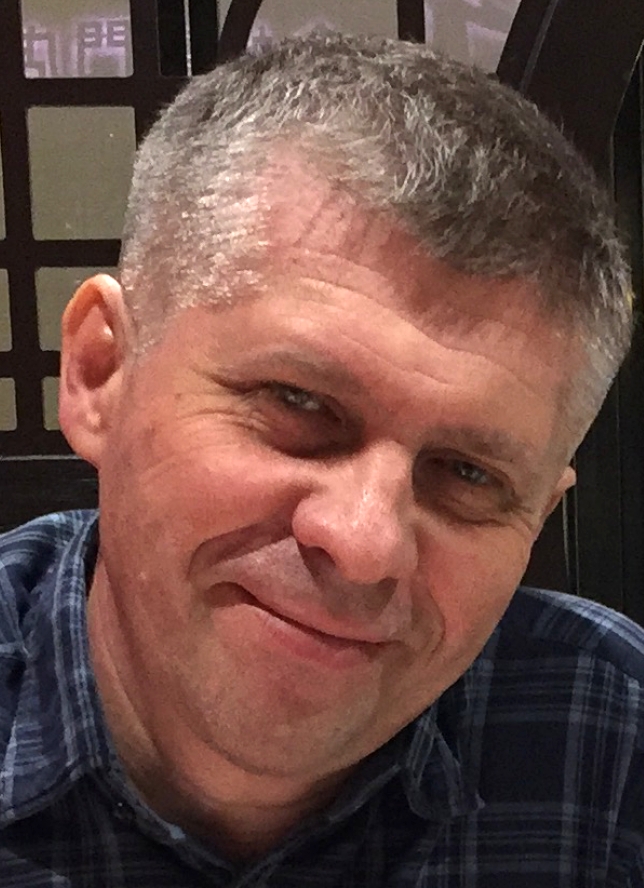
Is Software in Automation Systems Like Dark Matter?
In the rapidly evolving field of industrial automation, new buzzwords such as Industry 4.0 and Cyber-Physical Systems frequently emerge. However, despite these innovations, a casual observer might notice a surprising lack of visible progress over the past 25 years. This is because most advancements are software-related and thus remain unseen. Unlike the tangible advancements in machinery and infrastructure, software innovations are crucial yet largely invisible.
Information on software issues in automation is scarce and often anecdotal, leading to subjective evaluations by software engineers. Software is frequently undervalued by management due to its intangible nature, resulting in project overruns and uncertainties. Similar to dark matter in the universe, the impact of software in industrial automation is inferred from its effects, though it remains unseen. Software development efforts contribute to around two-thirds of the automation costs in modern production plants, making the engineering of future factory systems a major technical and organizational challenge.
Flexibility and reconfigurability are key to the adaptability of production facilities. As production becomes increasingly IT- and software-intensive, the efficiency of reconfiguration depends on the ability to change the underlying software and ensure interoperability across different hardware platforms. Cyber-Physical Engineering (CPE) offers a promising approach to these challenges by integrating physical and computational processes through interdisciplinary modeling.
This talk will showcase practical solutions and experiences from the Aalto Factory of the Future and LTU AIC-cube labs, demonstrating how recent European projects are aligning with the Industry X.0 effort.
BIO
Valeriy Vyatkin, Professor of Information and Computer Engineering in Automation at Aalto University, Finland on joint appointment as Chaired Professor of Dependable Computation and Communication Systems, Luleå University of Technology, Luleå, Sweden. He has been leading research projects related to software and systems engineering for cyber-physical automation systems, intelligent energy, logistics and transportation, addressing such aspects as dependability, distributed architectures and multi-agent systems applied in various industry sectors: SmartGrid, material handling, datacentres, building management systems and reconfigurable manufacturing, funded by the National Science Foundation (USA), Vettenskap Råd (Sweden), Academy of Sciences (Finland), various national and private agencies in Japan, Germany, New Zealand, Sweden, Finland and the EU. Valeriy co-authored nearly 400 publications. He is an IEEE Fellow, currently serving as Vice-President for Technical Activities of Industrial Electronics Society of IEEE.
Google Scholar: https://scholar.google.com/citations?hl=en&user=o5T_LG8AAAAJ
Alois Zoitl

Designing and implementing field agents with IEC 61499 and 4diac – Part II
The automation level in industrial applications is steadily increasing, resulting in higher system complexity. Actuators, sensors, and control devices from different vendors must collaborate with supervisory control and management systems, often within heterogeneous communication environments. Managing such systems requires addressing the complexity of distributed and autonomously acting devices, which are becoming increasingly intelligent and equipped with computing resources. These devices, often referred to as “Distributed Intelligent Systems,” necessitate advanced methods and concepts that encompass their entire lifecycle, including planning, operation, reconfiguration, and adaptation. This lecture therefore introduces the basics of the IEC 61499 standard for distributed automation and explores the usage of the open-source package 4diac for modelling IEC 61499 applications in industrial systems. Part I focuses on the IEC 61499 reference model, which serves as a key technology for next-generation distributed automation and control systems. Part II introduces the 4diac framework for modelling distributed automation applications.
BIO
Alois Zoitl holds a PhD degree in Electrical Engineering with focus on dynamic reconfiguration of real-time constrained control applications and a Master degree in Electrical Engineering with the focus on distributed industrial automation systems from Vienna University of Technology. Currently he is a Professor for cyber-physical systems for engineering and production at the Johannes Kepler University, Linz. Before that he was the scientific research group leader for Industrial Automation at the research institute fortiss in Munich, Germany. Before that he was the head of the research field Distributed Intelligent Automation Systems (Odo Struger Laboratory) at the Automation and Control Institute (ACIN), Vienna University of Technology. He is co-author of more than 250 publications (3 books, 9 book chapters, 28 journal articles) and the co-inventor of 4 patents in the mentioned areas. Alois Zoitl conducted and lead several industry funded R&D projects as well as coordinated and participated in several public funded (national as well as European) R&D projects. He is a founding member of the open source initiatives Eclipse 4diac, providing a complete IEC 61499 solution, and OpENer. Furthermore, he is a senior member of the IEEE and since 2009 he is an active member of the IEC SC65B/WG15 for the distributed automation standard IEC 61499. He was named convenor of the group in May 2015.
